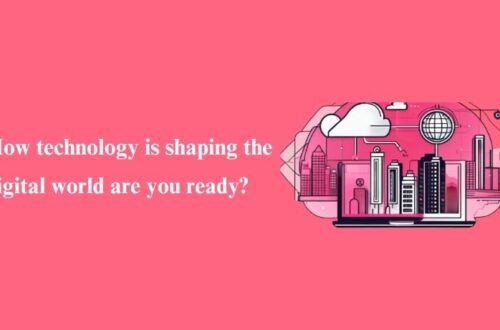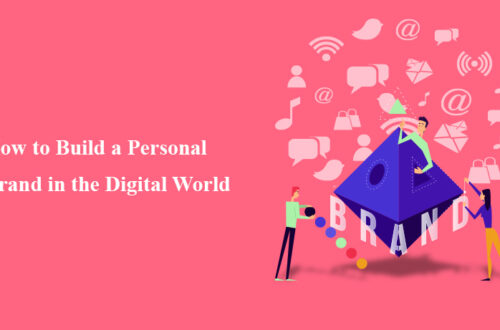Remember chalkboards? Those dusty rectangles that squeaked and smudged? Yeah, they’re becoming relics of a bygone era. Education, as we knew it, is undergoing a digital renaissance. The Future of Education in the Digital World is here and thanks to technology, learning has jumped out of the four walls of a classroom and into our pockets, our homes, and even our voices (hello, AI tutors!).
But where are we headed next? What does the future hold when screens replace textbooks, and algorithms guide study plans? Let’s plug in and find out.
Future of Education in the Digital World | Rise of Virtual Classrooms
Gone are the days when education was bound by geography or limited resources. Virtual classrooms have burst onto the scene like rock stars and they’re here to stay.
Key trends driving virtual learning:
- Global Access: A student in rural India can now attend a lecture by a Harvard professor. Mind = blown.
- Interactive Platforms: Tools like Zoom, Google Classroom, and Microsoft Teams make learning collaborative, even at a distance.
- Hybrid Models: Schools worldwide are adopting blended learning half online, half in-person. It’s the best of both worlds.
Fun Fact: By 2030, global EdTech investments are projected to hit $404 billion. That’s a lot of bandwidth.
Personalized Learning | Future of Education in the Digital World
Let’s face it, no two students are the same. So why should their education be?
Thanks to AI and data analytics, we’re moving toward hyper-personalized learning experiences where lessons adapt to how a student learns best.
What personalized learning looks like:
- Adaptive AI Tutors: Tools like ChatGPT (hey, that’s me!) offer instant explanations tailored to individual needs.
- Custom Learning Paths: Students can set their own pace, skipping ahead or slowing down as needed.
- Gamified Learning: Apps like Duolingo or Prodigy turn learning into a game. And honestly, who doesn’t love leveling up?
Hot Keywords: AI in education, adaptive learning, student-centered education.
EdTech Innovations: The Cool Kids on the Block
From virtual reality field trips to blockchain certificates, the future of education is getting a serious tech upgrade.
Here are some cutting-edge tools shaping tomorrow’s classrooms:
- Virtual Reality (VR) & Augmented Reality (AR)
- Explore ancient Rome or dissect a frog virtually, of course.
- Blockchain for Credentials
- Say goodbye to forged diplomas. Blockchain keeps academic records secure and tamper-proof.
- AI-Powered Assessment Tools
- Automated grading? Yes, please. More time for teachers to focus on, well, teaching.
Pro Tip: Schools that embrace EdTech early tend to see higher student engagement and retention.
Teacher’s Role in a Digital Age: From Sage to Guide
Hold up does all this mean teachers are being replaced by robots? Not even close.
If anything, teachers are more vital than ever. But their roles are evolving.
New roles for educators:
- Facilitators of Learning: Less lecturing, more guiding.
- Tech Navigators: Helping students use digital tools effectively.
- Lifelong Learners: Teachers themselves are continuously upskilling in tech and pedagogy.
Real Talk: The human touch in education? Irreplaceable.
Challenges Ahead: It’s Not All Sunshine and Wi-Fi
Let’s not sugarcoat it digital education comes with its fair share of bumps.
Top challenges we’re still facing:
- The Digital Divide: Not everyone has access to reliable internet or devices.
- Screen Fatigue: Endless Zoom classes? Been there, snoozed through that.
- Data Privacy: As we go digital, protecting students’ information is critical.
What we need:
Governments, tech companies, and educators must team up to make digital education inclusive, safe, and engaging for all.
Looking Ahead: What Will School Look Like in 2035?
Picture this: Holographic teachers, AI mentors, decentralized universities, and 24/7 global classrooms. Sounds wild? Maybe. But not impossible.
Predictions for the near future:
- Microlearning on Demand: Learning will be bite-sized, skill-based, and instantly accessible.
- Global Collaboration: Students from five continents working on one science project. Why not?
- Emphasis on Soft Skills: Creativity, emotional intelligence, and critical thinking will matter more than memorizing facts.
Closing Thought:
Education is no longer about stuffing facts into brains. It’s about nurturing curiosity, building skills, and empowering minds digitally and beyond.
FAQs: Future of Education in the Digital World
What is the digital transformation of education?
Digital transformation in education refers to the integration of technology into teaching and learning processes. It includes online classes, virtual classrooms, AI-powered tools, digital textbooks, and more basically, it’s education getting a high-tech makeover.
How is technology improving education worldwide?
Technology breaks down barriers geographical, financial, and even physical. It allows personalized learning, real-time collaboration across countries, access to high-quality content, and helps students with disabilities learn more effectively.
Will teachers be replaced by AI?
Nope, not happening anytime soon. While AI can assist with grading, content delivery, and personalization, teachers play a crucial role in mentoring, motivating, and emotionally supporting students, something machines can’t replicate.
What are the disadvantages of digital education?
Like anything, digital learning has its downsides:
- Screen fatigue
- Lack of social interaction
- Inequity in access to devices or internet
- Potential privacy issues
But with the right balance and policies, many of these can be tackled effectively.
Is online learning as effective as traditional learning?
It depends. For self-motivated learners with access to good resources, online learning can be just as effective if not more. However, traditional methods still hold value, especially in building interpersonal skills and discipline.
What skills will students need in the future digital world?
The future belongs to adaptable learners. Key skills include:
- Digital literacy
- Critical thinking
- Problem-solving
- Emotional intelligence
- Creativity
- Communication and collaboration
How can schools prepare for the future of education?
By:
- Investing in EdTech
- Training teachers in digital tools
- Creating hybrid learning environments
- Prioritizing mental health and inclusivity
- Staying flexible and open to innovation
Final Words: The Future’s Already Here Let’s Log In
So, where does that leave us? Right at the intersection of possibility and progress.
The digital world isn’t replacing traditional education; it’s redefining it. And whether you’re a student, a parent, a teacher, or a curious soul, one thing’s for sure: the classroom of the future isn’t a place. It’s an experience.
Now that’s a class worth attending.






